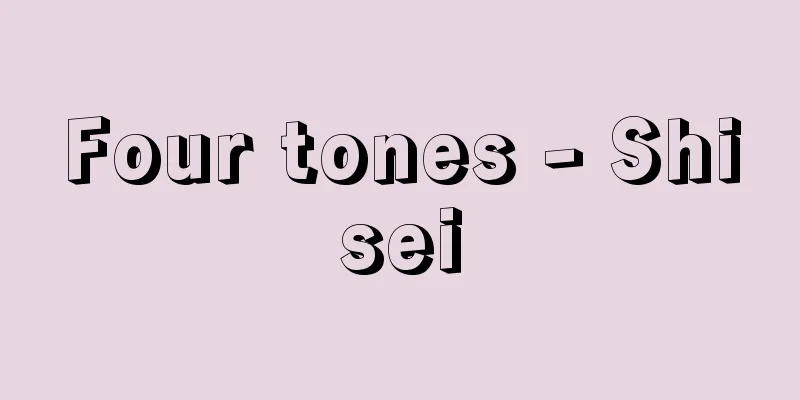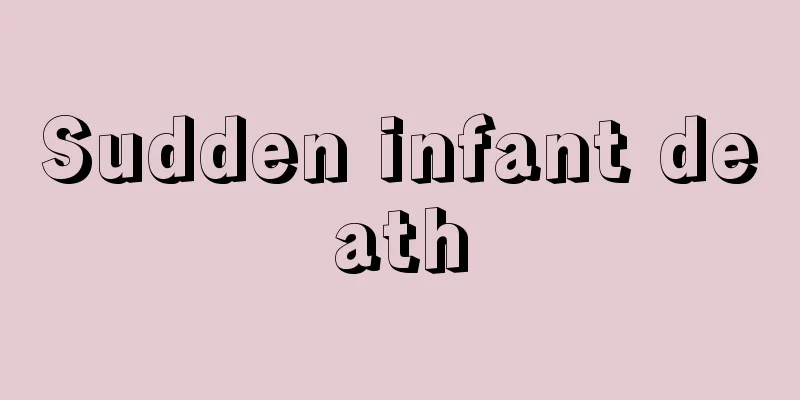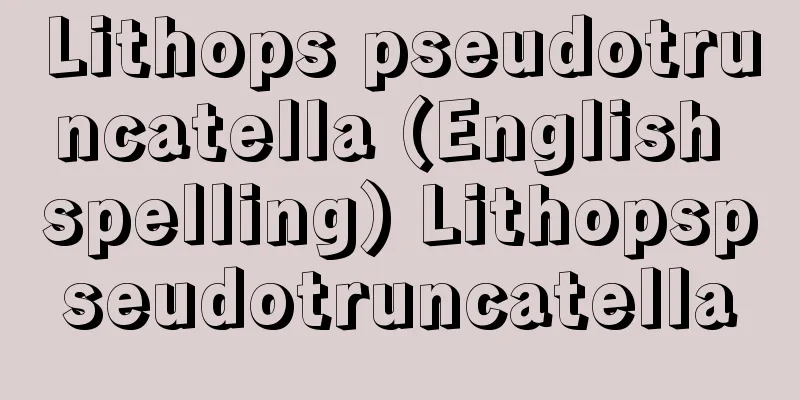Four tones - Shisei

|
This refers to the pitch intonation (tone) that accompanies the syllables of each Chinese word. In particular, it refers to the four types of tones in Middle Chinese, mainly from the Sui and Tang dynasties: Pingsheng, Shangsheng, Qusheng, and Nissheng. With the popularity of translating Buddhist scriptures into Chinese during the Northern and Southern Dynasties of China, tones were recognized through comparison with Sanskrit, and it is said that the theory of four tones was born from Shen Yue of the Liang dynasty. It is believed that the four tones theory was also established in Japan when Chinese characters were introduced, but the recognition of the four tones seems to have been vague in the ancient Go-on pronunciation that was introduced. The four tones of Japanese character pronunciation have been discussed in detail, especially in the Kan-on pronunciation. In the book "Shittanzo" by the monk An'nen (841-915), who traveled to China, it is said that there were two old and two new types of four-tone system of Kan'on in the early Heian period. Although it is unclear what each of these was, it is interpreted that the two new types were an eight-tone system in which the tones of Hirajo-Kyu-Nyu were further subdivided into Kei and Cho, resulting in a total of eight types. According to the Tendai sect's Kan'on reading chant (Shomyo) that has been handed down to date and various ancient documents, Hirasei = low Hirasei, Josei = high Hirasei, Kyosei = rising tone, Irusei = Iru-pa-on characters ending with -p, -t, or -k, and it is thought that Kei was a tone that started a little higher than the others, and Cho was a tone that started a little lower. According to concrete historical sources of tones remaining from the Heian period onwards, the six-tone system in which light and heavy were distinguished only between the ping-tone and entering-tone was predominant in Kan-on, and the eight-tone system was considered to be largely theoretical. Of the four tones of Japanese characters, the relationship between Go-on and Kan-on is particularly noteworthy; when comparing the two, there is a marked tendency for Kan-on characters with ping-tone to be shang-tone or qousheng to be Kan-on characters with ping-tone to be Kan-on characters with shang-tone and qousheng to be Kan-on characters with ping-tone. This reflects the differences in Chinese, which is the basis for the two, and probably corresponds to dialectal differences. Furthermore, recent research has pointed out that there are no shang-tone characters in Go-on historical sources from the ancient period, and that the original Go-on tone system was a three-tone system consisting of only the three tones of ping-tone and entering-tone. [Katsuaki Numamoto] "On the Four Tones in the Siddham Zoshoden" by Arisaka Hideyo (included in Studies on the Phonological History of the Japanese Language, 1957, Sanseido)" ▽ "The Ancient Meaning of the Four Tones in Japan by Kindaichi Haruhiko" (included in Theories on Japanese Accent, 1951, Hosei University Press)" ▽ "Yoritsugu, "Chinese Shomyo and its Tones" (included in Gengo Kenkyu, Issues 17 and 18, 1950, Linguistic Society of Japan)" ▽ "Numamoto Katsuaki, "Studies on the Sounds of Japanese Chinese Characters in the Heian and Kamakura Periods" (1982, Musashino Shoin)" Source: Shogakukan Encyclopedia Nipponica About Encyclopedia Nipponica Information | Legend |
|
中国語の各語の音節に伴っている高低抑揚(声調)のこと。とくに、隋(ずい)・唐代を中心とする中古漢語の平声(ひょうしょう)、上声(じょうしょう)、去声(きょしょう)、入声(にっしょう)の4種の声調をいう。中国南北朝期の仏典漢訳の盛行に伴い、梵語(ぼんご)との比較から声調が認識され、梁(りょう)の沈約(しんやく)によって四声の説がおこったといわれている。日本にも、漢字音の伝来とともに四声説が将来されたと思われるが、伝来の古い呉音においては、四声の認識はあいまいであったらしい。日本字音の四声は、とくに漢音において詳しい議論が展開されてきた。入唐僧安然(あんねん)(841―915ころ)の著『悉曇(しったん)蔵』には、平安初期の漢音の四声体系に、旧来のもの2種、新来のもの2種があったとする。そのおのおのがどのようなものであったかは不明の点もあるが、新来の2種は、平上去入の各声がさらに軽(けい)と重(ちょう)に下位区分され、合計8種の型に分かれた八声体系であったと解釈されている。現在伝えられている天台宗の漢音読声明(しょうみょう)や各種の古文献によれば、平声=低平調、上声=高平調、去声=上昇調、入声=もと-p・-t・-kで終わる入破音字であり、軽は各声のなかでやや高く始まるもの、重はやや低く始まるものであったと考えられる。なお、平安時代以後残っている具体的な声調史料によれば、漢音は平声と入声のみに軽・重を区別する六声体系を主流とし、八声体系は多分に理論的なものであったと考えられる。日本字音の四声において、とくに注目すべきは、呉音と漢音との関係であって、両者を比較すると、漢音の平声字は、呉音では上声か去声になり、漢音の上声字・去声字は、呉音では平声になる傾向が著しい。これは、両者の基盤となった中国語の差を反映するためで、おそらく方言的な相違に対応するものであろう。また、最近の研究によれば、古い時代の呉音史料では上声字がなく、呉音本来の声調体系は、平去入の三声のみから成り立つ三声体系であったことが指摘されている。 [沼本克明] 『有坂秀世著「悉曇蔵所伝の四声について」(『国語音韻史の研究』所収・1957・三省堂)』▽『金田一春彦著「日本四声古義」(『国語アクセント論叢』所収・1951・法政大学出版局)』▽『頼惟勤「漢音の声明とその声調」(『言語研究』17・18号所収・1950・日本言語学会)』▽『沼本克明著『平安鎌倉時代に於る日本漢字音に就ての研究』(1982・武蔵野書院)』 出典 小学館 日本大百科全書(ニッポニカ)日本大百科全書(ニッポニカ)について 情報 | 凡例 |
>>: Seasonal system - Seasonal system
Recommend
Stage director
The director is the one who creates and unifies a...
Lipocarpha microcephala
...Himekugu is distributed throughout Japan and C...
Battle of Leuctra - Battle of Leuctra
The Battle of Sparta and Thebes in 371 BC. In that...
Garuda Law - Karuraho
In esoteric Buddhism, a ritual to remove illness, ...
Basic industry
The industries that form the foundation of general...
Flowers and Hanshichi - Ohana Hanshichi
A character in Joruri and Kabuki. Hanshichi, a swo...
Rio Bravo Trilogy
…An American film produced in 1959. This is the s...
flock
…It is a general term for a group of animals. In ...
Yar Khoto (English spelling)
…The site of the capital city in Wuxing Township,...
False Frankincense - Ginyuukou
… Frankincense and myrrh were thus the main perfu...
Legitimationspapier - Mensekishoken (English spelling)
When a debtor makes a payment to the holder of the...
Thompson, B.
...American scientist and administrator. Born Ben...
Warty frog - Warty frog
A slang term for a species of frog belonging to t...
High energy bonds
Phosphate bonds release large amounts of free ener...
Mahayana-saṅgraha (English spelling)
…It was established in the 4th century. Original ...









